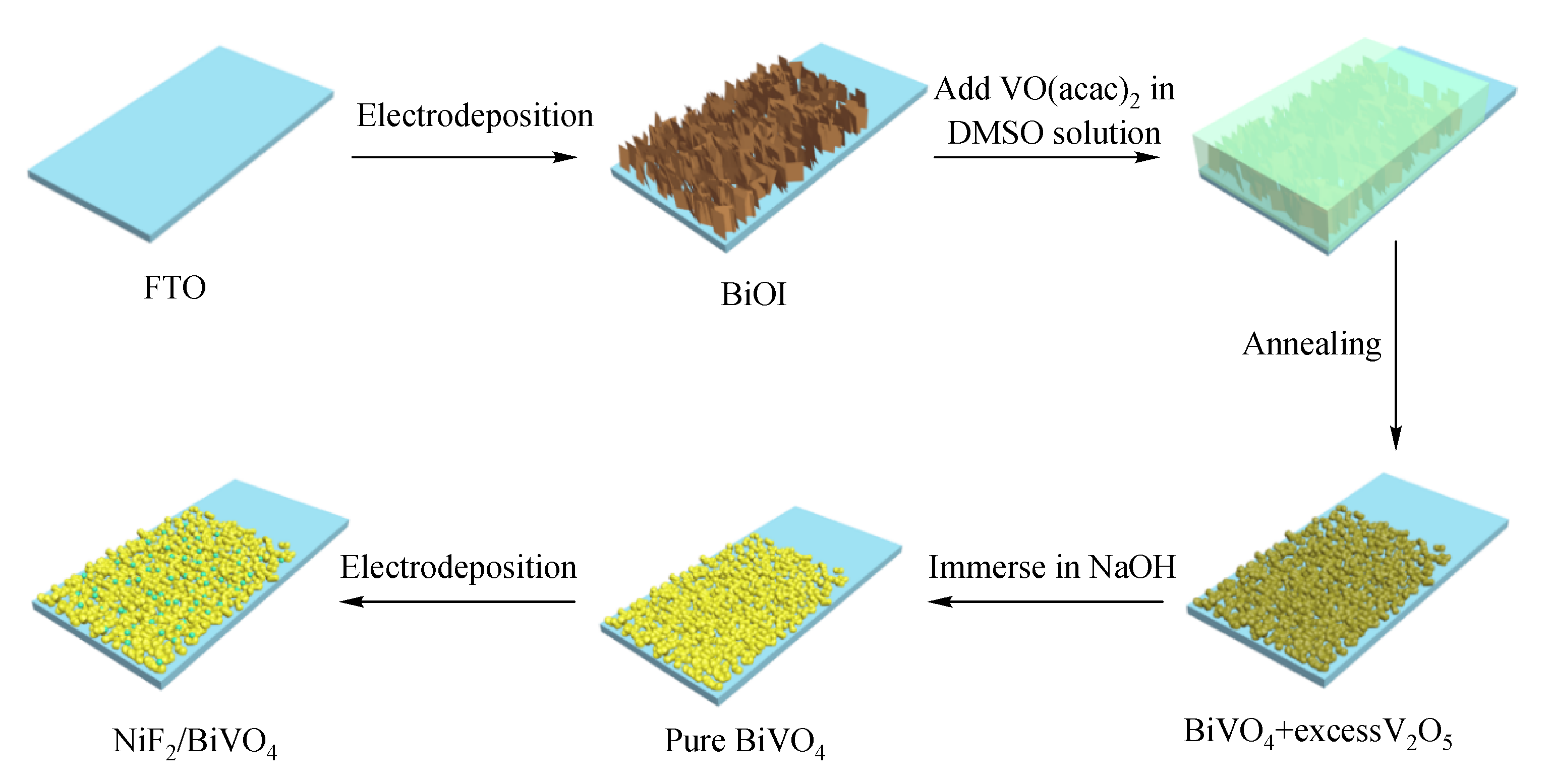The crystalline phases of all the as-prepared electrodes were investigated by XRD analysis. As shown in Fig. 2(a), the clear diffraction peaks stemmed from BiVO
4 can be well indexed to a monoclinic scheelite crystal system (JCPDS. No. 14-0688) [
37]. Apart from the peaks of SnO
2 ingredient of FTO substrates (JCPDS No. 46-1088), no impurity diffraction peaks can be observed. However, in the pattern of NiF
2/BiVO
4, the characteristic diffraction peaks of NiF
2 nanoparticles cannot be distinctly observed (JCPDS No. 22-0749), which might be attributed to the diffraction peaks of NiF
2 overlap with that of BiVO
4 [
38]. Yet, despite these, the TEM image of the NiF
2/BiVO
4 electrode indicates that a layer of fine NiF
2 nanoparticles was loaded on the BiVO
4 film, as presented in Figs. 2(b) and 2(c). More specifically, the high-crystalline structure with a lattice spacing of 0.16 nm and 0.18 nm corresponding to the (–121) plane of BiVO
4 and the (121) plane of NiF
2 respectively could be visibly observed in Fig. 2(d) [
30]. In the meantime, it can be clearly seen that there is an obvious interface between BiVO
4 and NiF
2. These results attest that NiF
2/BiVO
4 has been successfully prepared. The surface morphology and microstructure of all the photoanodes are reflected by FE-SEM. From Fig. 2(e), it can be observed that a pure BiVO
4 with a wormlike structure and a smooth surface is coated on the surface of the FTO conductive glass. After electrodeposition, the NiF
2 nanoparticles are uniformly dispersed on the surface of BiVO
4, as demonstrated in Fig. 2(f). Additionally, it can be realized from the related element mappings of the NiF
2/BiVO
4 (Figs. 2(g)–2(k)) that the Bi, V, O, Ni, and F elements are scattered evenly in the composite electrode, which also indicates the successful preparation of the photoanode material.













